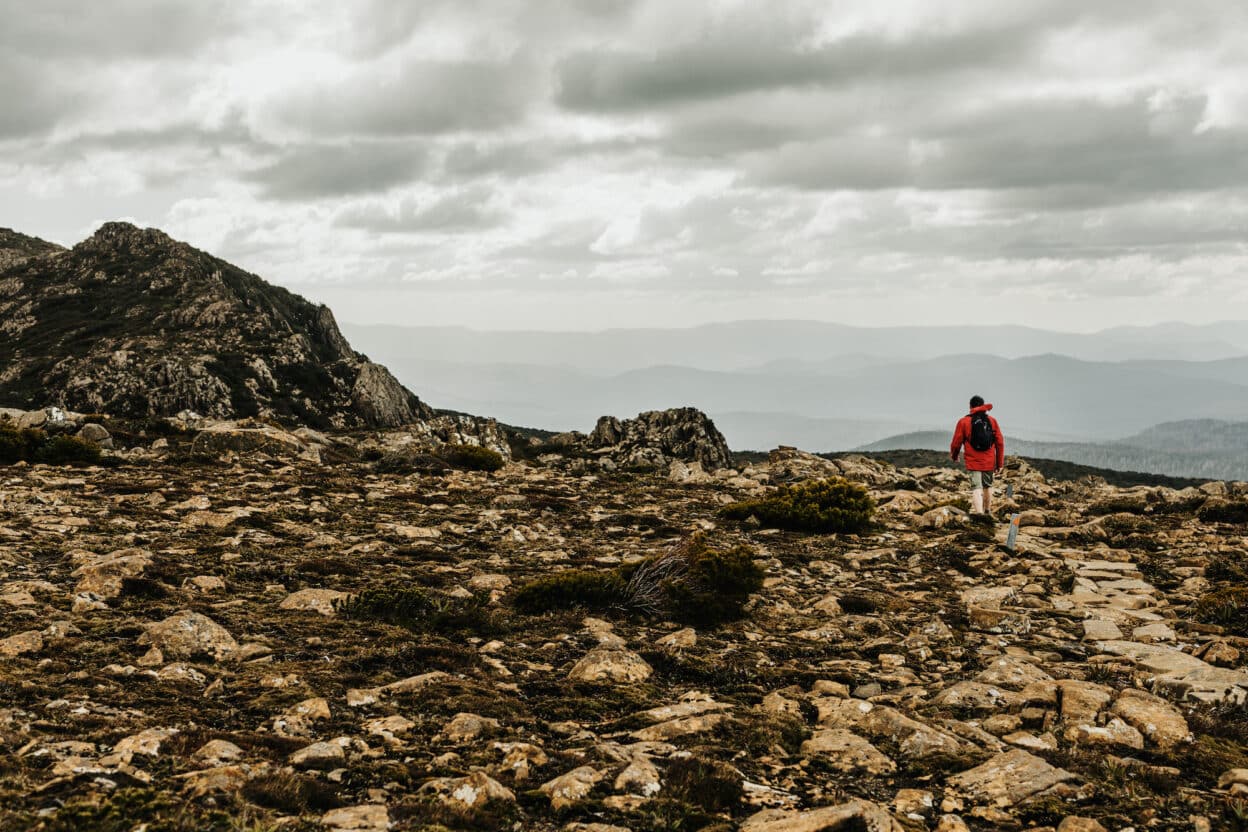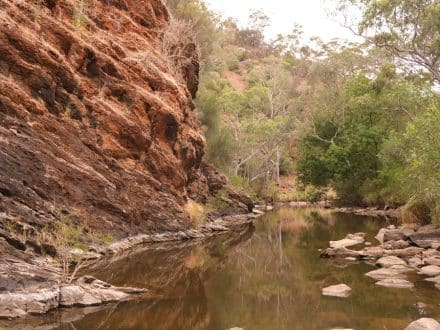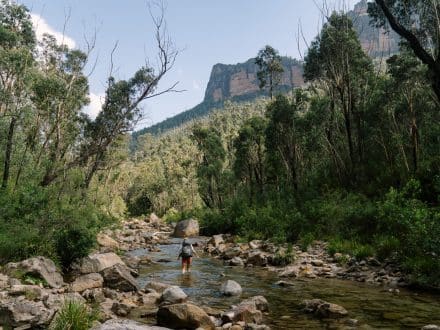An hour-and-a-half’s drive from Hobart is a place rich in biodiversity and history that gives new meaning to the phrase ‘pretty as a picture’.
Tasmania’s Hartz Mountains National Park is a place on the edge. Drive here from Hobart and one minute you’re in the Huon Valley, and seemingly high in the mountains the next. It’s the final piece of the World Heritage-listed wilderness before the island settles into the tamer, settled south-east, making it pretty much a dividing line between wild Tasmania and mild Tasmania.
It’s also, with Mount Field National Park, the closest piece of the Tasmanian Wilderness World Heritage Area to Hobart. In less than 90 minutes drive, you can be striding across the slopes towards Hartz Peak, the park’s highest summit.


For Hobartians, this 1,254-metre peak ranks beside kunanyi/Mount Wellington and Mount Field as the mountains of choice for day walks. The trail sets out from a large car park and day shelter through low bush that seems to shrink only further with each step, descending from eucalypt forest to low scrub to alpine scarcity. Cloud sits low on the ridge to my right. This is the evocatively-named Devils Backbone that forms the high line of the Hartz Mountains, but for now is just a faint pigment etched into the cloud.

A few minutes from the car park, a memorial plaque appears beside the trail, marking the spot where prospectors Arthur and Sidney Geeves – sons from the family that gave its name to nearby town of Geeveston and who cut the first trail into the Hartz Mountains – died in 1897, caught in a snowstorm just four days before the start of summer.
The Hartz Mountains are that kind of place – a bright, sunny day in Hobart is no gauge on weather conditions here.
Along this shelf of land beneath the Devils Backbone there are glimpses down to the Huon River, which looks like another world. Its flat waters gleam like tin in the sunlight even as a southerly wind blows through me, filled with icy hints of its journey from the Southern Ocean and Antarctica.

For three kilometres, the approach stretches along the foot of the ridge, passing through a field guide of Tasmanian alpine plants: cushion plants, scoparia, pandani, coral ferns and pineapple grass. The boardwalk is dotted with the Cubist art of wombats, and the landscape is speckled with lakes such as Ladies Tarn and, most prominently, Lake Esperance, pooled beneath a haphazard escarpment of rock and scrub. A few steps beyond Ladies Tarn the track begins a sharp climb, rising onto the Devils Backbone, ascending the final rung of the ladder into the mountains.
Pandani bushes – the Dr Seuss characters of the Tasmanian mountains – lean over the track, their long leaves rustling like paper as my shoulders brush through them. Once a popular walking destination itself, the lake is now hardly visited.
In just a few minutes, I’m standing atop Hartz Pass and, soon after, looking across to Hartz Lake, the largest of the national park’s constellation of lakes.

Up here, atop the Devils Backbone, it’s a different world again. The vegetation is even more stunted, and the mountains are armoured with rock. The track weaves along the ridge on stepping stones patterned with lichen, before turning up onto the frost-shattered shoulder of Hartz Peak. The final scramble up the summit ridge is airy but short, ending at a makeshift wind shelter dimpled into the summit.
The Huon Valley is little more than the toss of an apple away, but this feels truly like the mountains.


